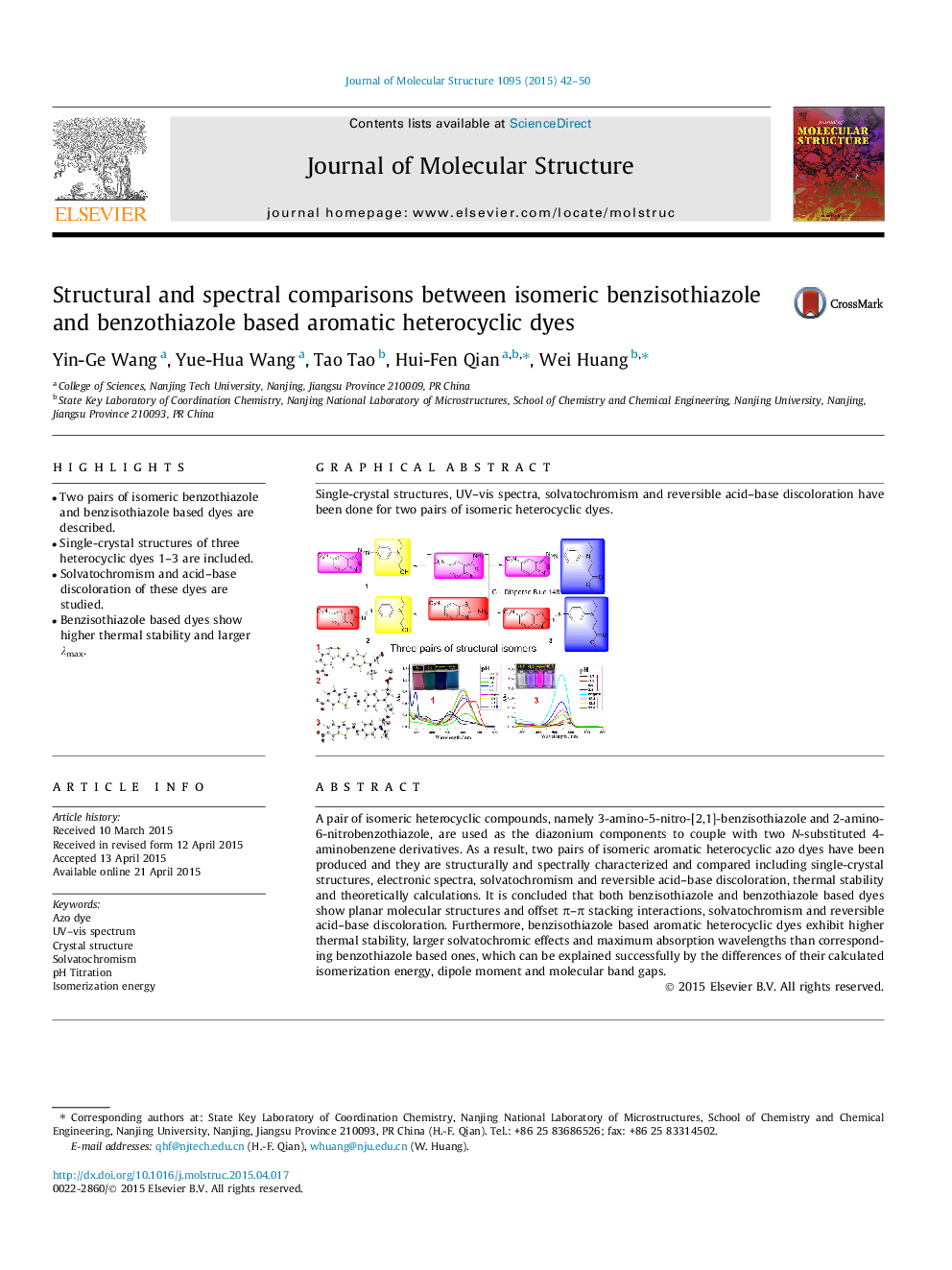| Article ID | Journal | Published Year | Pages | File Type |
|---|---|---|---|---|
| 1404829 | Journal of Molecular Structure | 2015 | 9 Pages |
•Two pairs of isomeric benzothiazole and benzisothiazole based dyes are described.•Single-crystal structures of three heterocyclic dyes 1–3 are included.•Solvatochromism and acid–base discoloration of these dyes are studied.•Benzisothiazole based dyes show higher thermal stability and larger λmax.
A pair of isomeric heterocyclic compounds, namely 3-amino-5-nitro-[2,1]-benzisothiazole and 2-amino-6-nitrobenzothiazole, are used as the diazonium components to couple with two N-substituted 4-aminobenzene derivatives. As a result, two pairs of isomeric aromatic heterocyclic azo dyes have been produced and they are structurally and spectrally characterized and compared including single-crystal structures, electronic spectra, solvatochromism and reversible acid–base discoloration, thermal stability and theoretically calculations. It is concluded that both benzisothiazole and benzothiazole based dyes show planar molecular structures and offset π–π stacking interactions, solvatochromism and reversible acid–base discoloration. Furthermore, benzisothiazole based aromatic heterocyclic dyes exhibit higher thermal stability, larger solvatochromic effects and maximum absorption wavelengths than corresponding benzothiazole based ones, which can be explained successfully by the differences of their calculated isomerization energy, dipole moment and molecular band gaps.
Graphical abstractSingle-crystal structures, UV–vis spectra, solvatochromism and reversible acid–base discoloration have been done for two pairs of isomeric heterocyclic dyes.Figure optionsDownload full-size imageDownload as PowerPoint slide
